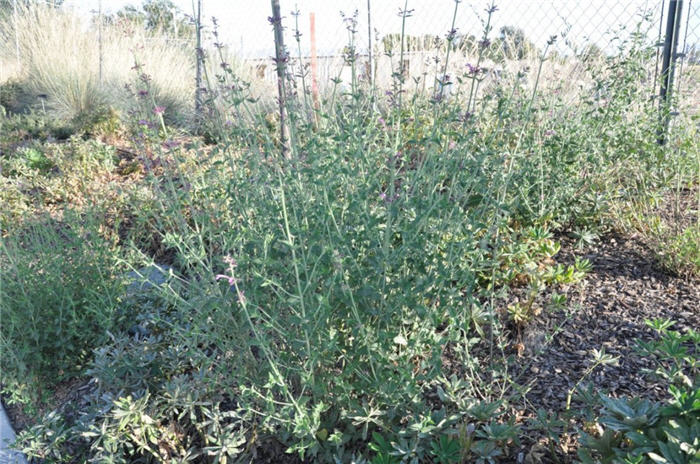| Botanical Name: Agastache 'Ava' | |
| Common Name: Ava Hummingbird Mint |

-
Anatomy
-
Culture
-
Design
Plant Type
Perennial, Herb
Height Range
3-6'
Flower Color
Pink
Flower Season
Summer, Fall
Leaf Color
Green, Grey Green
Bark Color
n/a
Fruit Color
n/a
Fruit Season
n/a
Sun
Full, Half
Water
Low
Growth Rate
Moderate, Slow
Soil Type
Sandy, Clay, Rocky
Soil Condition
Average, Poor, Well-drained, Dry
Soil pH
Neutral, Basic
Adverse Factors
n/a
Design Styles
English Cottage, Meadow, Mediterranean, Ranch, Spanish
Accenting Features
Fragrance, Showy Flowers
Seasonal Interest
Summer, Fall
Location Uses
Perennial Border, Foundation, Patio, Raised Planter, Walls / Fences
Special Uses
Cut Flowers
Attracts Wildlife
Hummingbirds
Information by: Stephanie Duer
Photographer:
Photographer:
-
Description
-
Notes
‘Ava’ is a agastache cultivar has huge spikes of tubular, deep rose-pink flowers with raspberry-red calyxes that bloom bloom in whorls on erect, salvia-like spikes. Flowers bloom mid summer into early fall, sometimes to first hard frost. Flowers are attractive to bees, hummingbirds and butterflies. Leaves are a soft grey-green and have a heady mint scent, and may be used fresh or dry to flavor teas. Grows about 4 to 5 feet tall and 2 feet wide. A perennial garden standout introduced by High Country Gardens.
Grow in average, dry to medium moisture, well-drained soils in full sun to part shade, though best in full sun. Good soil drainage is essential. Plants will perform poorly and may not survive winter in un-amended clay soils or over-watered soils. Plants tolerate heat and some dry soils once established. Deadhead spent flower blooms to promote additional bloom. Cut back the dead stems in late winter to early spring. Sandy/gravelly mulches will protect plants and help to avoid onset of rot.